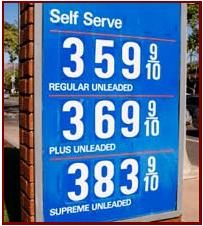Cheap oil prices will help the U.S. automotive market in the near term. Elsewhere in the world it’s not likely to matter much. That’s the conclusion from a respected research firm.
Spurred by reduced pump prices, U.S. consumer confidence is expected to continue to rise, resulting in a potential shift to larger, more profitable vehicles in the U.S. and Canada since these vehicles will be more affordable to own and the value of fuel economy becomes less important to consumers.
From a global perspective, IHS analysts estimate that cumulative global sales could be 5 to 7 million units higher between 2014 through 2021 because of cheap oil prices. The largest beneficiaries will be the U.S. market, based on improved consumer confidence; and developing markets such as India and the ASEAN region where lower ownership costs will bring new buyers.
To balance the shift in consumer preferences caused by cheap oil, IHS Automotive research says that U.S. vehicle manufacturers are increasing production plans for larger light trucks – including SUVs and pickups – at the expense of the smaller B- and C-segment vehicles. (Here we go again?)
In other markets around the world, automaker responses are significantly different from those in the U.S. market. IHS expects that there will be little to no change in vehicle preference or production due to the greater insulation of pump prices from oil costs based on taxes and/or subsidies. The impact in these markets is significantly reduced by government incentives and the need to meet regulations.
The effect on powertrains is expected to mirror the market response. In Japan, China and Europe, little change is expected in the near term. OEMs are continuing to follow regulatory developments, and they will need to offer increasingly fuel-efficient fleets regardless of fuel price and market preference.
In the U.S., though, there will be a greater need to improve the average fuel efficiency of new vehicles due to the expected market shift toward larger vehicles. Based on this, IHS Automotive expects an increase in market share for technologies already in use, including more alternative powertrains, primarily stop-start and hybrid, as well as downsized and boosted gasoline engines during the next several years.


